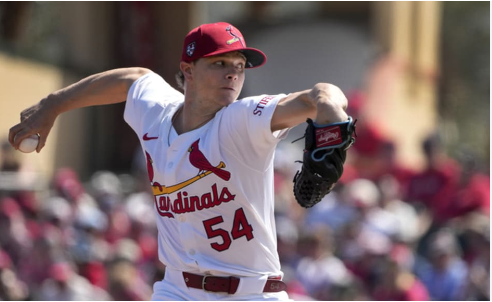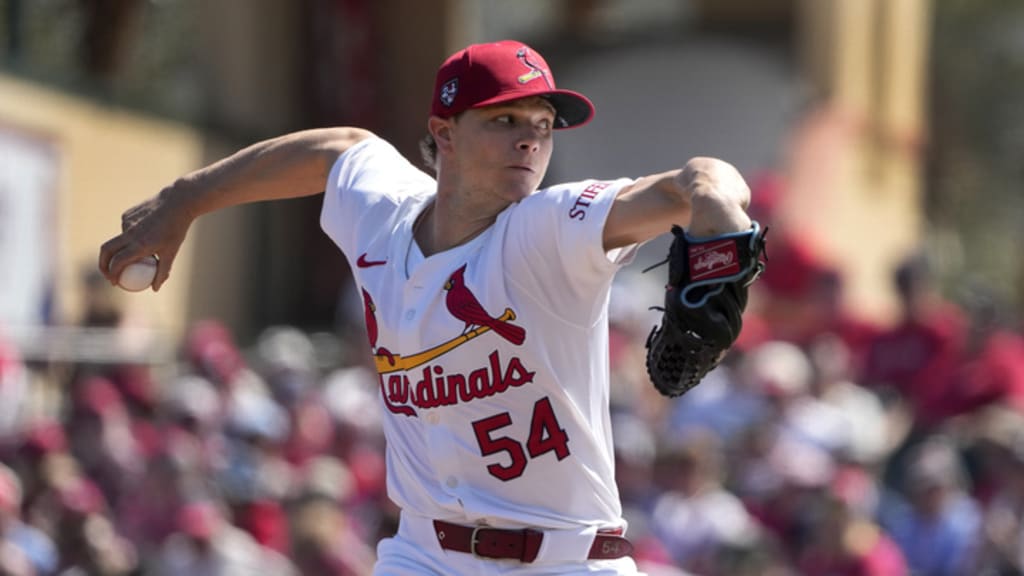
I really enjoy pitchers who are unconventional. They bring a unique and intriguing element to the game every time they step on the mound. Another aspect of pitchers that fascinates me is when they have a standout pitch that sets them apart. It adds an extra layer of excitement and analysis.
Today, we’re diving into a pitcher who fits both of these descriptions: Sonny Gray.
We’re all aware of Gray’s signature pitch—the sweeper—which stands out as one of the most effective pitches in baseball with a remarkable .175 wOBA allowed and a 46.4% whiff rate.
However, what makes it even more compelling is its unconventional usage. To clarify, the pitch itself isn’t particularly unusual; it’s the way Gray strategically deploys it that catches attention.
Today, I want to explore what makes Gray’s usage of this pitch unconventional and, more importantly, why this approach suits his pitching style so well.

Let’s delve into it.
Platoon Splits
Let’s begin by examining the peculiar fact that Sonny Gray throws more sweepers to left-handed hitters (100) than to right-handed hitters (95) as the ace for the St. Louis Cardinals.
Why is this unusual? Well, sweepers typically exhibit significant platoon splits, meaning they are more effective against hitters of the same handedness as the pitcher. Conventional wisdom suggests that right-handed pitchers like Gray would heavily rely on this pitch against right-handed batters while using it less against lefties.
Last season, right-handed batters struggled immensely against Gray’s right-handed sweepers, posting just a .255 wOBA with a 34.6% whiff rate—numbers that reflect dominance. Left-handed hitters, on the other hand, managed a .297 wOBA and a 27.8% whiff rate, indicating they were more effective against the pitch than their right-handed counterparts. This data supports the common strategy of using sweepers predominantly against same-handed hitters.
/cdn.vox-cdn.com/uploads/chorus_image/image/72835542/1750507267.0.jpg)
However, Gray bucks this trend. He doesn’t prioritize righty-lefty matchups when it comes to deploying his sweeper. Instead, he uses it against both types of hitters almost equally.
This trend is relatively recent, starting only after Gray joined the Cardinals. Last season, 66% of his sweepers were thrown against right-handed hitters. This year, Gray’s usage has shifted closer to a 50/50 split, with slightly more sweepers now directed at left-handed hitters.
This shift highlights Gray’s confidence in the pitch’s ability to perform regardless of the batter’s handedness. Despite conventional wisdom suggesting otherwise, Gray believes in the effectiveness of his sweeper against all hitters.
We’ve already covered the general platoon splits seen across the league with sweepers. Now, let’s delve into how Gray’s sweeper specifically fares against batters of different handedness.
Sonny Gray’s Sweeper Stats by Batter Handedness
| Batter Handedness | wOBA | xwOBA | Whiff Rate | Pitcher RV/100 |
|---|---|---|---|---|
| Right | 0.143 | 0.158 | 54.9% | 2.5 |
| Left | 0.185 | 0.221 | 39.0% | 0.4 |
Based on the data, we can make two definitive statements about Sonny Gray’s sweeper pitch. Firstly, it performs significantly better against right-handed hitters compared to left-handed hitters. Secondly, despite this platoon split, Gray continues to use his sweeper effectively against left-handed hitters.
The sweeper isn’t completely impervious to platoon advantages, but its effectiveness is so pronounced that even when left-handed hitters have a slight edge, they still struggle to hit it effectively.
Now, the question arises: why is Gray’s sweeper so effective, and if it’s such a potent pitch, why doesn’t he rely on it more frequently? The answer lies in understanding when Gray chooses to deploy this signature pitch.
Count
Okay. We know that Gray possesses a potent sweeping pitch, and recently, he seems less concerned about platoon matchups. So, what’s next? Let’s revisit his pitch selection briefly to get a clearer picture.
Last season, Gray used his sweeping pitch 15% of the time against left-handed hitters. This year, that number has risen to nearly 20%. However, he’s been using it less against right-handed hitters: from 25.4% last year to just 18.9% this year.
That’s quite unusual. Why would Gray decrease usage of his most effective pitch when it’s most advantageous? If you’re wondering the same thing, you’re not alone.
I often advocate for pitchers to rely more on their best pitches, which makes Gray’s approach here perplexing. So, what’s the reasoning?
It all boils down to Gray’s strategic use of the pitch. This isn’t haphazard; it’s deliberate and precise.
Look closely at the heat map for his sweeping pitch and observe a couple of things: Firstly, how effective Gray is at placing it down and away; secondly, how frequently he throws it out of the strike zone, and how far he’s willing to place it.
This isn’t accidental either.
Gray prefers to save this pitch until he has two strikes, when its impact is most devastating. Remarkably, 84% of his sweeping pitches this year have been thrown in such situations. It’s a pitch tailored for a specific scenario, serving as the perfect strikeout weapon for right-handed hitters.
This approach allows Gray to use the pitch outside the strike zone liberally and still thrive.
He throws it outside the zone more than 75% of the time, yet due to its exceptional movement and the pressure on hitters to avoid strikeouts, they still swing at it 44% of the time. It’s a potent strategy for Gray.
While the quality of the pitch certainly plays a role, it’s Gray’s strategic deployment that truly maximizes its effectiveness and transcends traditional platoon advantages.
Keep in mind, the following data table contains small sample sizes, but the disparity in effectiveness between Gray’s sweeping pitch inside and outside the zone is revealing.
Sonny Gray’s Sweeper Stats by Location
| Location | wOBA | xwOBA | Whiff Rate | Pitcher RV/100 |
|---|---|---|---|---|
| In Zone | 0.252 | 0.323 | 17.0% | -2.1 |
| Out of Zone | 0.114 | 0.113 | 68.3% | 2.9 |
This pitch excels precisely because Gray often throws it outside the strike zone, and he can do so confidently due to the counts in which he chooses to deliver it.

Leave a Reply